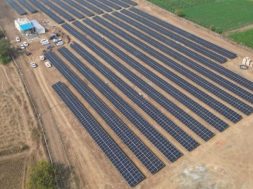One grand prize, awards in five categories as well as two Wienerberger Special Prizes were presented on 8th May
“In this project, brick not only serves a decorative purpose, but it is determinative for the whole building structure – a fact I consider as particularly important,” Wang Shu, jury member and Pritzker Prize winner 2012, describes the grand prize winner of the Wienerberger Brick Award 2014. “It is very simple, but very beautiful – it was the first project that made me immediately think: This is magnificent.” He praises the Kantana Film and Animation Institute in Nakhon Pathom in Thailand, which is also the award winner in the Special Solution category. The training centre designed by Bangkok Project Studio was built of more than 600,000 hand-made bricks obtained from Thailand’s last brick-producing village. Unemployed people were trained to carry out the construction works, a fact giving the project a special social component. The awards of the international Wienerberger Brick Award 2014 were presented on 8th May in the Architekturzentrum Wien: one grand prize, awards in five categories as well as two ‘Wienerberger Special Prizes’. International architecture critics and journalists had proposed more than 300 projects from 26 countries, 50 of which were shortlisted for this year’s Wienerberger Brick Award, which has been conferred every two years since 2004.
A house allowing a lifestyle as self-reliant as possible was victorious in the Residential Use category: in the Chinese Province of Shaanxi, John Lin constructed the ‘House for All Seasons’ from traditional materials like clay bricks. The interior courtyards connect the kitchen, bathroom, living room and bedrooms with each other, whilst the roof serves to dry meat and collect rainwater. In the Public Use category, the Kunstmuseum Ravensburg by LRO Lederer Ragnarsdóttir Oei carried off the first prize. Windows interrupt the façade of the museum for the Peter and Gudrun Selinka Art Collection only in few specific places. The bricks were obtained from the demolition of a nearby monastery. The Buda Art Centre in Kortrijk, Belgium was victorious in the Public Re-Use category. Studio 51N4E converted a former textile dyeing factory on the Island of Buda into a generous place for cultural activities. Already existing brick surfaces were cleaned and renovated, woodwork and concrete columns were filled in. Particularly salient is the yellow brick with its almost velvety appearance.
A cooking school located in a former slaughterhouse impressed the jury in the Urban Infill class. Sol89 is responsible for the ‘Cooking School in Ancient Slaughterhouse’ near Cádiz in Spain. Bright whitewashed walls are compliant with regional building traditions, and special ceramic tiles provide for hygiene and slip resistance in the kitchen.
The Wienerberger Special Prize went to two buildings projects using Wienerberger products: the House of Light in Pula, Croatia by Andrija Rusan as well as the Paasitorni Hotel & Conference Centre in Helsinki by K2S Architects, where custom-manufactured ivory- coloured facing bricks make a lasting impression.
“I am very enthusiastic about the creative standards and, most importantly, about the architecture of the winning projects, which is geared to the respective use,” says Heimo Scheuch, CEO of Wienerberger AG. “In my opinion, the projects built of recycled bricks are especially inspiring – a proof of the durability and sustainability of this building material.”
14
Cookie Consent
We use cookies to personalize your experience. By continuing to visit this website you agree to our Terms & Conditions, Privacy Policy and Cookie Policy.









